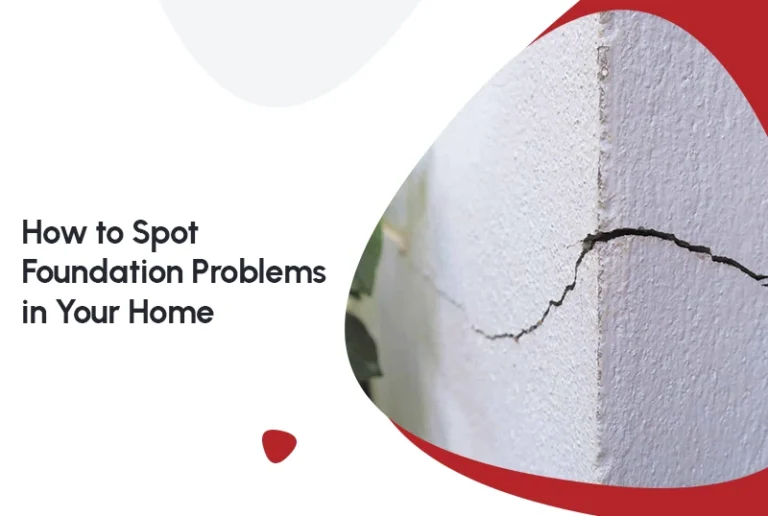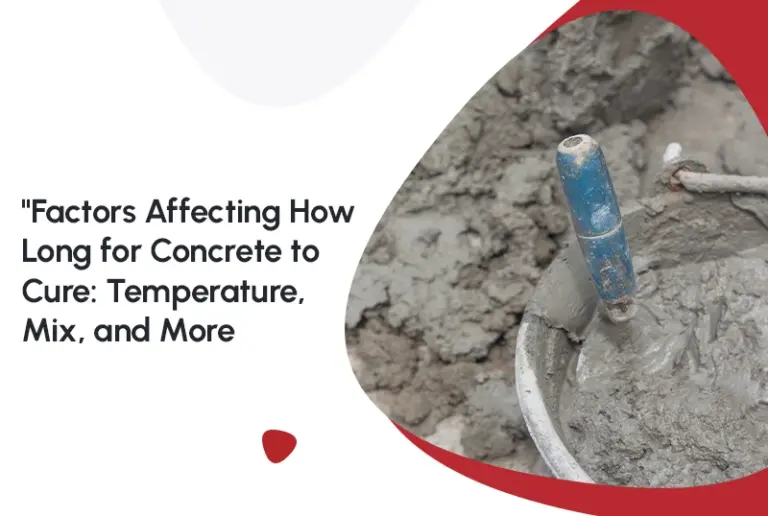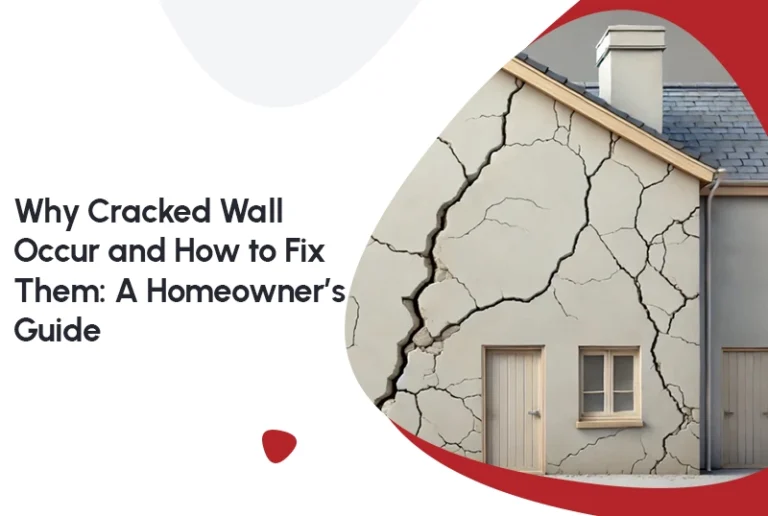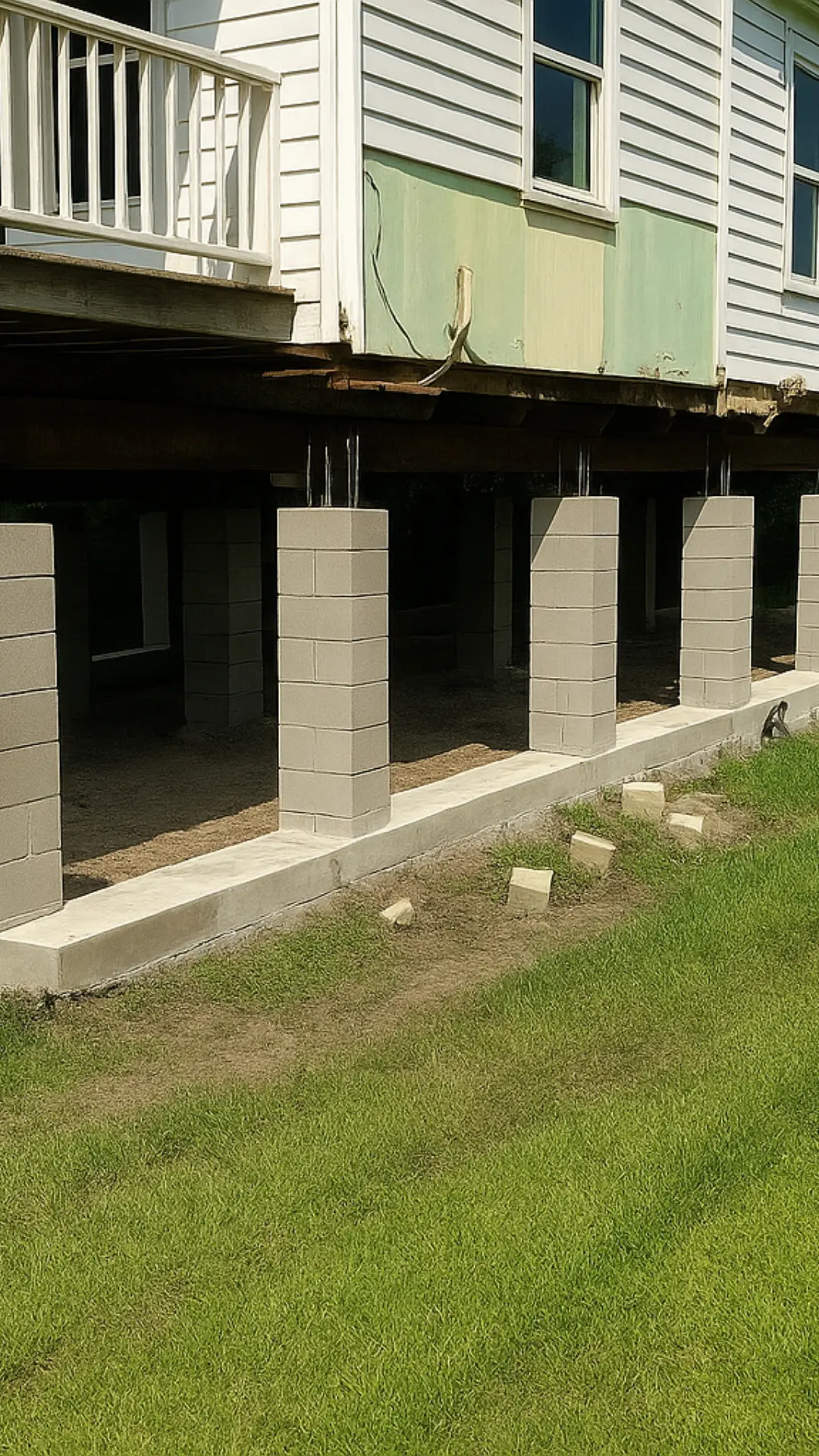Retaining walls are essential for landscaping, providing both aesthetic value and structural support to prevent erosion. But here’s the thing, the success of a retaining wall isn’t just about how it looks or how well it holds back soil. The key to long-term stability lies in retaining wall drainage.
Effective drainage prevents water buildup behind the wall, which could lead to hydrostatic pressure, one of the main causes of foundation and wall damage. Let’s dive into why proper retaining wall drainage is crucial and how you can ensure your structure lasts for years.

The Importance of Proper Retaining Wall Drainage
Water accumulation behind a retaining wall can lead to significant problems. As moisture builds up, it exerts pressure on the wall. This hydrostatic pressure can cause walls to lean, crack, or even collapse entirely. This is especially common in regions with heavy rainfall or in areas like Houston, where soil moisture fluctuates due to seasonal weather changes.
When water cannot escape, hydrostatic pressure builds behind a wall, a problem so severe that one study found inadequate drainage can reduce the wall’s factor of safety by 45%.
Hydrostatic pressure can often overwhelm a retaining wall’s strength, leading to costly repairs and even complete replacement if left unchecked. Retaining wall drainage systems prevent this pressure by ensuring that water is effectively channeled away from the wall, maintaining its stability and integrity.
Proper retaining wall drainage helps:
- Prevent cracking and leaning of walls
- Protect the soil behind the wall from erosion
- Extend the life of your retaining wall
- Reduce the risk of foundation damage to nearby structures
A lack of drainage solutions can result in significant property damage and the need for expensive repairs, particularly for foundational issues that might extend to your home.
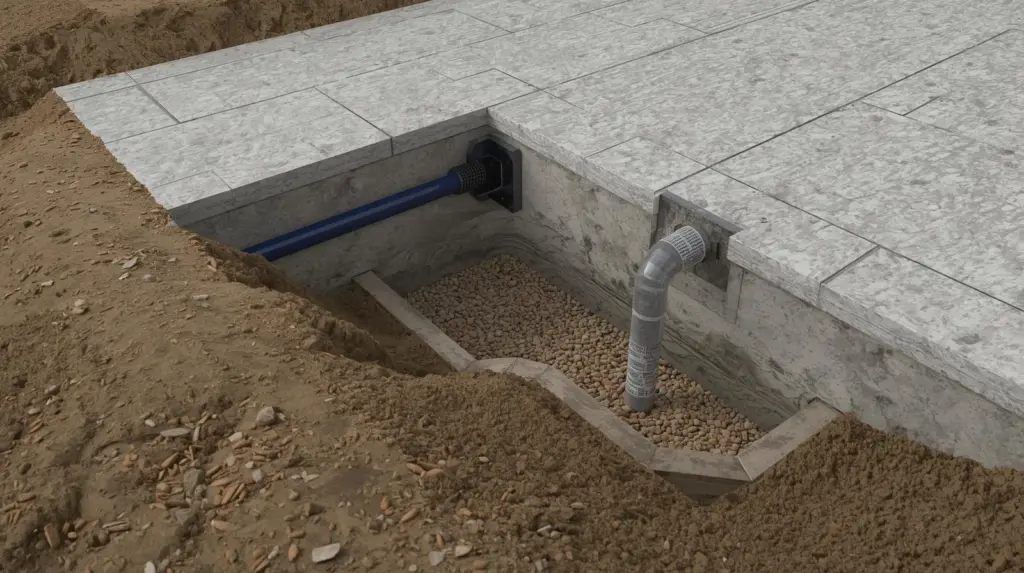
Common Drainage Solutions for Retaining Walls
Now that we understand the importance of drainage, let’s explore the most common drainage solutions for retaining walls. Implementing these methods ensures that water doesn’t accumulate behind your wall, preventing hydrostatic pressure and the associated risks.
1. Gravel Backfill
Gravel backfill is one of the simplest and most effective drainage methods. By filling the space behind the retaining wall with gravel, water is able to flow through the spaces between the stones and filter away from the wall.
How It Works:
Gravel allows water to move freely without exerting pressure on the wall. The large gaps between the gravel particles provide ample space for water to filter through, while the smaller particles create a natural filtration system. This backfill ensures that water doesn’t get trapped behind the wall.
Benefits:
- Cost-effective and easy to install
- Prevents water from pooling behind the wall
- Simple maintenance
2. Drainage Pipes
One of the most common methods for retaining wall drainage is the use of drainage pipes, typically perforated PVC pipes. These pipes are installed at the base of the wall, allowing water to flow through and be directed away from the foundation.
How It Works:
Water that collects behind the wall is funneled into the perforated pipe, which directs it away from the wall and into a designated drainage area, such as a storm drain or a dry well.
Benefits:
- Effective for large walls with significant water flow
- Long-term solution for preventing water accumulation
3. Weep Holes
Weep holes are small openings that are incorporated into the retaining wall structure. These holes allow water to escape, preventing water buildup and reducing pressure on the wall.
How It Works:
These holes are spaced regularly across the wall and provide an exit point for any water that might build up behind the wall. They are typically used in combination with gravel backfill and drainage pipes for maximum effectiveness.
Benefits:
- Simple to install
- Effective for masonry and concrete retaining walls
- Helps reduce hydrostatic pressure
4. Geotextiles
Geotextiles are synthetic fabrics that are used to improve drainage and prevent soil erosion. When used in retaining wall drainage systems, geotextiles help separate soil from gravel or drainage pipes, allowing water to flow freely while preventing soil from clogging the drainage system.
How It Works:
Geotextiles are placed between the soil and the gravel or pipe, ensuring that the drainage system remains clear and effective. They also provide a protective barrier to prevent soil erosion from behind the wall.
Benefits:
- Enhances the effectiveness of other drainage systems
- Prevents soil from clogging drainage systems
- Durable and long-lasting
Design Considerations for Effective Drainage
When planning and installing drainage solutions for your retaining wall, several key considerations can ensure optimal performance. Below are some important factors to keep in mind:
1. Understanding Site Conditions
Before deciding on a drainage method, it’s essential to assess the site conditions. Factors such as soil type, slope, and climate all impact the effectiveness of drainage solutions. For example, if your property has heavy clay soil, water will not drain as easily, and additional solutions like perforated pipes or geotextiles may be needed.
For homes in areas like The Woodlands, it’s crucial to evaluate the soil conditions and choose the appropriate drainage system to prevent further issues.
2. Professional Assessment
If you’re unsure about the best drainage solution for your retaining wall, it’s always a good idea to consult a professional. A foundation expert or landscape architect can assess your specific needs and recommend the most effective drainage options for your property.
A professional assessment can also help you identify potential risks like drainage around your foundation, which could lead to more extensive issues such as settling or cracking.
When Should You Install a Retaining Wall Drainage System?
There are several signs that indicate it’s time to install a retaining wall drainage system:
- Standing water near the wall after heavy rainfall
- Cracks or leaning in the wall
- Erosion behind the wall
- Basement or crawl space flooding
If you’re noticing any of these issues, it’s crucial to address the drainage problem immediately. For homes with pier and beam foundations or concrete slab foundation repair the woodlands, proper drainage around the retaining wall is essential to maintaining structural integrity. Be sure to consult experts in pier and beam foundation repair Woodlands to prevent further damage.
A study from the Insurance Information Institute (III) found that water damage claims make up nearly 24% of all homeowner insurance claims in the U.S., with the average claim amounting to $10,000 or more. A major contributor to these claims is foundation damage caused by poor drainage around structures.
Regular Maintenance: Key to Preventing Issues
Installing a reliable drainage system is just the beginning—regular maintenance is crucial for keeping your retaining wall and drainage system in top condition. Over time, even the best drainage solutions can encounter issues if they’re not properly maintained. Routine inspections and maintenance are essential to ensure that everything continues to function as intended.
Here are the critical maintenance tasks to keep your system running smoothly:
Ensuring Weep Holes Are Unobstructed:
Weep holes play a key role in allowing water to escape from behind the retaining wall. If these holes become clogged with dirt, debris, or even plant growth, the water can’t escape, leading to hydrostatic pressure buildup. This pressure can cause cracks or even wall failure. It’s important to check these holes regularly and clear any blockages to ensure proper water flow.
Keeping Pipes and Drainage Channels Clear:
The pipes that direct water away from your wall and foundation are a vital part of your drainage system. Over time, these pipes can become clogged with dirt or roots, reducing their effectiveness. By performing regular checks and cleaning the pipes as needed, you ensure that water continues to flow freely and doesn’t accumulate behind your wall. This will prevent unnecessary strain on your retaining wall and foundation.
Preventing Soil Erosion and Clogging:
The soil behind the retaining wall can naturally shift over time, especially in Houston’s moisture-heavy climate. If not properly maintained, it can erode, clogging drainage systems and causing uneven water distribution. Ensuring that the soil remains stable behind your wall and replacing any lost soil is vital for preventing long-term damage to both your wall and the drainage system.
For homes located in areas prone to moisture issues, like foundation repair Rosenberg homes, regular maintenance becomes even more crucial. These homes are more likely to experience water buildup and pressure changes around their foundation, making it essential to inspect and maintain the drainage system at least once a year. By taking proactive steps, you’ll prevent structural damage, safeguard the longevity of your retaining wall, and avoid expensive repairs down the road.
Conclusion
In conclusion, retaining wall drainage is an essential aspect of maintaining the longevity and stability of your landscape structure. Proper drainage solutions prevent water buildup, reduce hydrostatic pressure, and protect your home’s foundation from the risks of water damage.
Whether you’re dealing with a small garden wall or a larger, more complex structure, investing in the right drainage system ensures that your retaining wall stays in top condition for years to come.
If you’re dealing with drainage issues around your home, don’t wait for cracks to appear, contact FNF Foundation for expert advice and solutions. Our team specializes in foundation repair, house leveling service the woodlands, and more.
FAQs About Retaining Wall Drainage
1. What happens if my retaining wall doesn’t have proper drainage?
Without proper drainage, water can accumulate behind the wall, creating hydrostatic pressure. Over time, this can cause cracks, leaning, or even the collapse of the retaining wall.
2. Can I install drainage solutions for my retaining wall myself?
While some simpler solutions, like gravel backfill, can be a DIY project, installing pipes or geotextiles often requires professional expertise to ensure effective water management and long-term stability.
3. How often should I inspect my retaining wall drainage system?
It’s a good practice to inspect your drainage system at least once a year, especially after heavy rainfall or storms. Regular inspections will help you catch issues before they become major problems.
4. Can poor drainage cause foundation problems?
Yes, poor drainage around a retaining wall can lead to soil erosion, water infiltration, and pressure buildup, all of which can damage the foundation of your home over time. If you notice water damage near your foundation, consider calling for a professional inspection.
5. What are the signs that my retaining wall drainage is failing?
Look out for standing water near the wall, cracks in the wall, leaning, or erosion behind the wall. These signs indicate that water isn’t flowing properly away from the wall, which could lead to structural damage.

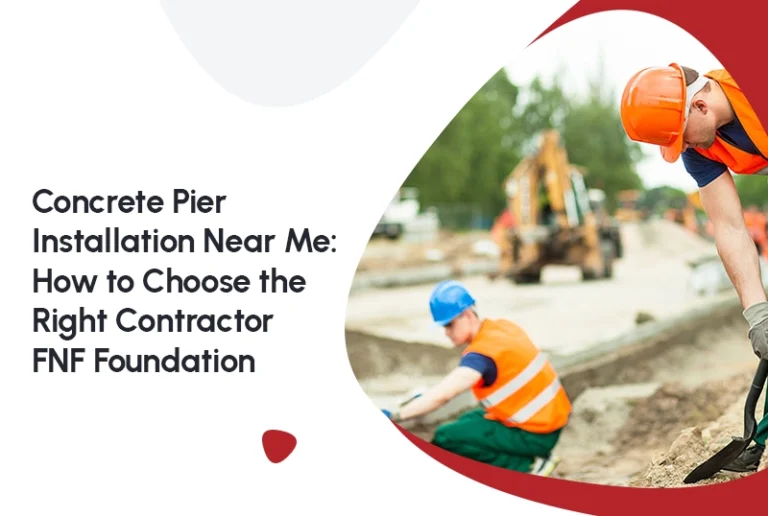
![How Much Does Slab Leak Repair Cost? [2025 Data]](https://fnffoundation.com/wp-content/uploads/2025/07/HowMuchDoesSlabLeakRepairCost2025Data-ezgif.com-jpg-to-webp-converter-768x516.webp)
